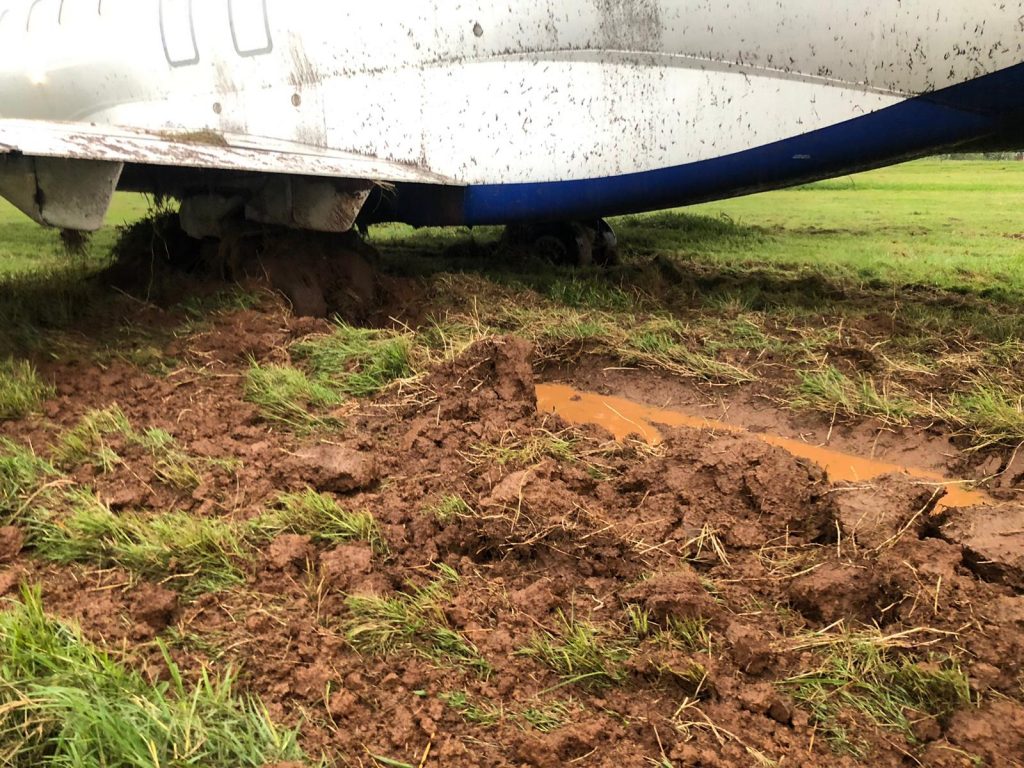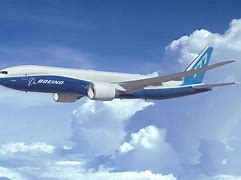Inoperative instrument landing system likely to be a focus of investigations into Rwandair overrun

An inoperative Instrument Landing System and an unlit runway centre-line, make for a difficult landing at Entebbe International Airport in inclement weather, pilots familiar with the facility have told 256BN. The revelations come in the wake of the Rwandair landing mishap in the early hours of April 20 that saw the aircraft exit the runway. Flight WB464 from Nairobi, operated using a CRJ900, veered off to the right of runway 17 moments after touch down. The airport was closed to traffic for close to 15 hours as accident investigators assembled to conduct onsite assessment.
The carrier blamed bad weather for mishap which happened during a rainstorm. The aircraft came to a stop after travelling more than 20 metres off the tarmac, coming to rest in the soft ground. None of the 60 passengers and crew on board reported injuries and they disembarked normally from the stricken aircraft.
The Uganda Civil Aviation Authority says investigations into the incident have started but in separate comments, aircrews say they have been landing at the airport minus the Instrument Landing System which has been inoperative for more than four months now. The Instrument Landing System or ILS, is a radio navigation aid that directs the aircraft towards the runway for landing. It shows the pilots if they are properly aligned with the runway telling them if they are at the correct height for the approach and how far left or right the aircraft is from the runway center line.
In its absence, more sophisticated aircraft such as the Airbus A330/A350 which are equipped with required navigation performance and Runway Overrun Protection System, have alternative navigation systems that can still ensure a safe approach and landing in marginal weather. The CRJ does not have these capabilities onboard and crews are essentially flying a visual approach into Entebbe at any time of the day.

Even for crews that regularly land at the airport, that would be a lot more challenging at night on a rainy day observed one veteran pilot. “In the absence of the ILS and a lit centre line, you are basically flying into a hole because all you have are the runway lights since the centre-line markings would be submerged under water,” he added.
To illustrate his point, 256BN has dug up this YouTube video of a typical typical night approach to Entebbe’s Runway 17 with the ILS active https://www.youtube.com/watch?v=5cm6r-pNb5A . As can be seen in the video, the centre-line markings are faint even on a normal night and would be completely invisible if covered by water.
For the record, in East Africa, only Kigali International Airport has runway centre-line lighting. The runways at Jomo Kenyatta in Nairobi and Julius Nyerere in Dar es Salaam, also don’t have the feature but they are less prone to flooding. Kigali installed it to enhance safety and operational efficiency because the airfield is often overcast by heavy mist which was impeding landings and takes at night and early mornings.

Night view of the runway at Kigali International Airport
UCAA spokesperson Vianney Luggya was not available to comment on these reports but according to sources familiar with operations at Entebbe, although the ILS is not technically faulty as such, it has not been calibrated to ensure that the signal it sending out to air crews, is accurate as required by the International Civil Aviation Organisation. As a result, although the signal can be picked, aircrews are not using it because they would beheld liable if investigations established that they had locked-in on it in event of a mishap.
Other commentators pointed out that even on the best of days, flight WB464 is operationally delicate because the crews would be fairly tired having been awake from around 2AM Uganda time when they set off from Kigali for the triangular flight that first goes to Nairobi before embarking on the return leg via Entebbe.
“And at a time like this, you have to hand-fly the aircraft all the way from Nairobi because of stormy weather that is typical along the route. So by the time you get to Entebbe, your reflexes are not at their best” said another pilot.
Among others, the investigation into the runway excursion will focus on the state of the aircraft, weather conditions at the time of the accident, the condition of runway surface and the availability and state of navigation aids available to the crew. For a non- ILS approach, aircrews rely on the PAPI’s – Precision Approach Path Indicators- and the extended centreline which is a protrusion of lights aligned to the centreline at the end of each side of the runway.

 New leadership for bankers’ umbrella as total assets top $12 billion
New leadership for bankers’ umbrella as total assets top $12 billion
 Brussels Airlines to announce Nairobi service
Brussels Airlines to announce Nairobi service
 SITA promises enhanced travel experience after Materna acquisition
SITA promises enhanced travel experience after Materna acquisition
 Saudia’s 105 aircraft order stretches A320neo lead over rival Max
Saudia’s 105 aircraft order stretches A320neo lead over rival Max
 Kenya calls for speedy resolution of territorial and immigration disputes with Uganda at JMC
Kenya calls for speedy resolution of territorial and immigration disputes with Uganda at JMC
 Boeing refuses to pay hackers $200 million for stolen Data
Boeing refuses to pay hackers $200 million for stolen Data
